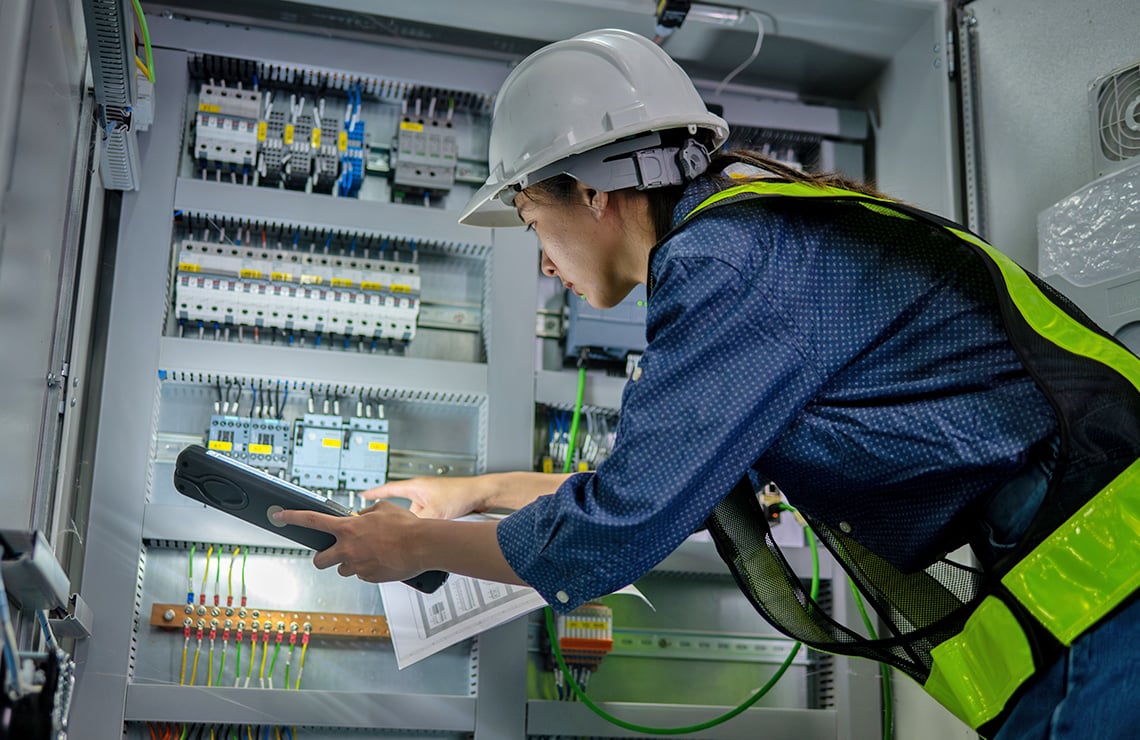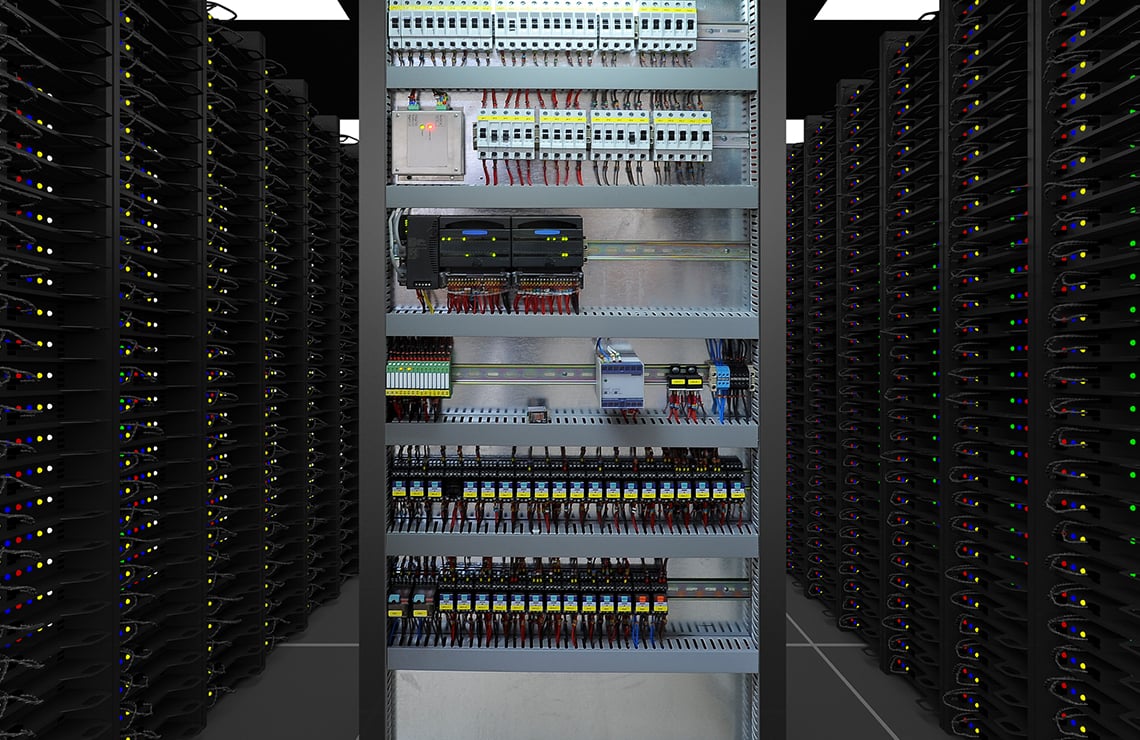
We’ll explore what a PLC is, how it works, the different types available, and how it fits into the broader industrial landscape. Whether you're an engineer, operations manager, or a decision-maker at your facility, this blog will help you make informed choices about your automation infrastructure.
What Is a PLC?
A Programmable Logic Controller (PLC) is a rugged digital computer used for industrial automation. Unlike general-purpose computers, PLCs are built to withstand harsh industrial environments and continuously monitor inputs to trigger specific outputs based on programmed logic. Think of a PLC as the brain of your automated system—it takes in data, processes it according to logic rules, and controls machinery accordingly.
How Does a PLC Work?
PLCs work in a continuous loop, often referred to as the "scan cycle":
- Input Scan: The PLC checks the status of all input devices.
- Program Execution: The controller runs its logic based on the input conditions.
- Output Scan: It updates the output devices accordingly.
- Housekeeping: The PLC performs internal diagnostics and communication tasks before starting the cycle again.
This loop happens in milliseconds, ensuring real-time responsiveness.
Key Components of a PLC
A PLC typically includes the following:
- Central Processing Unit (CPU): Executes the control instructions.
- Power Supply: Converts line voltage to usable power.
- Input/Output Modules (I/O): Interface for field devices.
- Programming Device: Used to write and upload programs.
- Communication Ports: For network integration.
PLC vs. Traditional Relay Control Systems
Before PLCs became standard, relay-based systems controlled industrial processes. But relays were bulky, slow, and hard to troubleshoot. PLCs offer:
- Faster response times
- Easier programming
- Simplified troubleshooting
- Scalable integration
These advantages make PLCs essential for modern control environments.
Types of PLCs
PLCs come in several types, each suited for specific applications:
- Compact PLCs: All components in one unit. Ideal for small, standalone systems.
- Modular PLCs: Components are separated, allowing for scalability.
- Rack-mounted PLCs: Used in large systems, often integrated with SCADA.
Applications of PLCs
PLCs are found across nearly every industry:
- Manufacturing: Automating assembly lines
- Utilities: Water treatment and power distribution
- Oil & Gas: Managing drilling operations
- Food & Beverage: Controlling mixing and packaging
- Life Sciences: Ensuring compliance with safety standards
Common PLC Programming Languages
The International Electrotechnical Commission (IEC) defines five standard programming languages for PLCs:
- Ladder Logic (LD)
- Structured Text (ST)
- Function Block Diagram (FBD)
- Instruction List (IL)
- Sequential Function Charts (SFC)
Ladder Logic is most common due to its resemblance to relay logic schematics.

What Are the Benefits of Using a PLC
Using PLCs improves operational efficiency and safety:
- Reliability: Withstands harsh conditions
- Scalability: Easily upgraded
- Flexibility: Customizable logic
- Diagnostics: Built-in fault detection
- Energy Efficiency: Optimizes equipment usage
Cost Considerations
PLCs range from a few hundred to several thousand dollars depending on complexity. Factors affecting cost include:
- Number of I/O points
- Communication protocols
- Redundancy features
- Software licensing
Although the upfront investment may seem high, the long-term ROI makes PLCs a wise choice.
PLC Maintenance Best Practices
To ensure optimal performance, implement these practices:
- Regularly back up programs
- Check for firmware updates
- Monitor CPU usage and memory
- Inspect I/O connections
- Test battery backups
Future Trends in PLC Technology
PLC technology continues to evolve:
- Edge Computing Integration: For local data processing
- IIoT Connectivity: Enables real-time analytics
- Cybersecurity Enhancements: Protection against unauthorized access
- AI Capabilities: For predictive maintenance and decision-making
These trends ensure that PLCs remain a future-proof investment.
PLCs and Industrial Digital Transformation
As industrial sectors adopt digital transformation, PLCs play a pivotal role. They form the foundational control layer, integrating with higher-level systems like SCADA, DCS, and cloud analytics. The shift toward smart manufacturing relies on PLCs for data-driven decision-making and real-time control.
Learn More About Measurement Instrumentation
Choosing the Right PLC for Your Facility
Selecting a PLC depends on your application’s needs:
- Environmental Conditions: Temperature, humidity, vibration
- I/O Requirements: Number and types of input/output points
- Communication: Protocols such as Ethernet/IP, Modbus, Profibus
- Processing Speed: For high-speed applications like packaging lines
Consult with one of our automation experts to assess your current infrastructure and recommend the best-fit controller.
The Role of Proconex in Industrial Automation
At Proconex, we understand the unique challenges of industrial automation. Our measurement instrumentation solutions are designed to complement your control systems, including PLCs, by providing real-time data, precision, and reliability.
Our team can help you:
- Select the right PLCs and I/O modules
- Design scalable automation architectures
- Integrate PLCs with DCS and SCADA systems
- Optimize programming for performance
To Summarize
PLCs are the backbone of modern industrial automation. Understanding how they work, what types are available, and how to maintain them is essential for plant efficiency, safety, and scalability. As technology advances, PLCs will continue to play a central role in intelligent control infrastructure.
Click here to learn more about our Measurement Instrumentation Solutions
